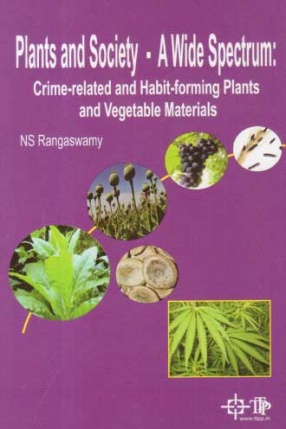Plants and Society: A Wide Spectrum: Crime-Related and Habit-Forming Plants and Vegetable Materials
In Plants and Society Prof. NS Rangaswamy presents under one title a coherent account of the most wildly scattered knowledge on the incredible variety of plant materials, plant poisons and drugs, and plant products and produce that have been used in committing or solving crimes, with historical, global, national, sociological, medical, economical, biological, legal and religious perspectives. Besides criminal abortion, foeticide, infanticide, homicide and suicide, 15 other crimes are dealt with. Although alcohol drinking and cigarette smoking are personal habits, no civilized society can afford to underestimate the societal/social and health perils wrought by binge drinking and chronic consumption of tobacco, alcoholism and tobacco consumption are rightly dealt with as grave societal crimes, and so are the smuggling and trafficking of plant drugs and other vegetable materials and products that network several nations. Bioterrorism (including agroterrorism) and narcoterrorism are crimes that no country can ignore any longer Addiction to plant narcotics, adulteration of food and other plant commodities, and acts of counterfeiting in which plant materials are directly or indirectly involved have wide range of negative impacts on human society.
Contents: Preface. 1. Introduction. 2. Crimes in ancient times. 3. A peek into toxicology. 4. Plant drugs and materials used in criminal abortions, female foeticides and female infanticides. 5. Role of plant drugs in homicides and suicides. 6. Narcotics and intoxicants in the world of crimes. 7. Alcohol—a grave crime weapon. 8. Tobacco habit—the insidious societal crime. 9. Drug addiction-a crime factor. 10. Drug trafficking and smuggling –the crimes that network the nations. 11. Plant materials used in various other offences. 12. Forensic poisoning and animal poisoning. 13. Adulteration of food and other commodities. 14. Bioterrorism. 15. Forensic botany. 16. Concluding remarks. Appendices. Selected bibliography.
Get it now and save 10%
BECOME A MEMBER








Bibliographic information